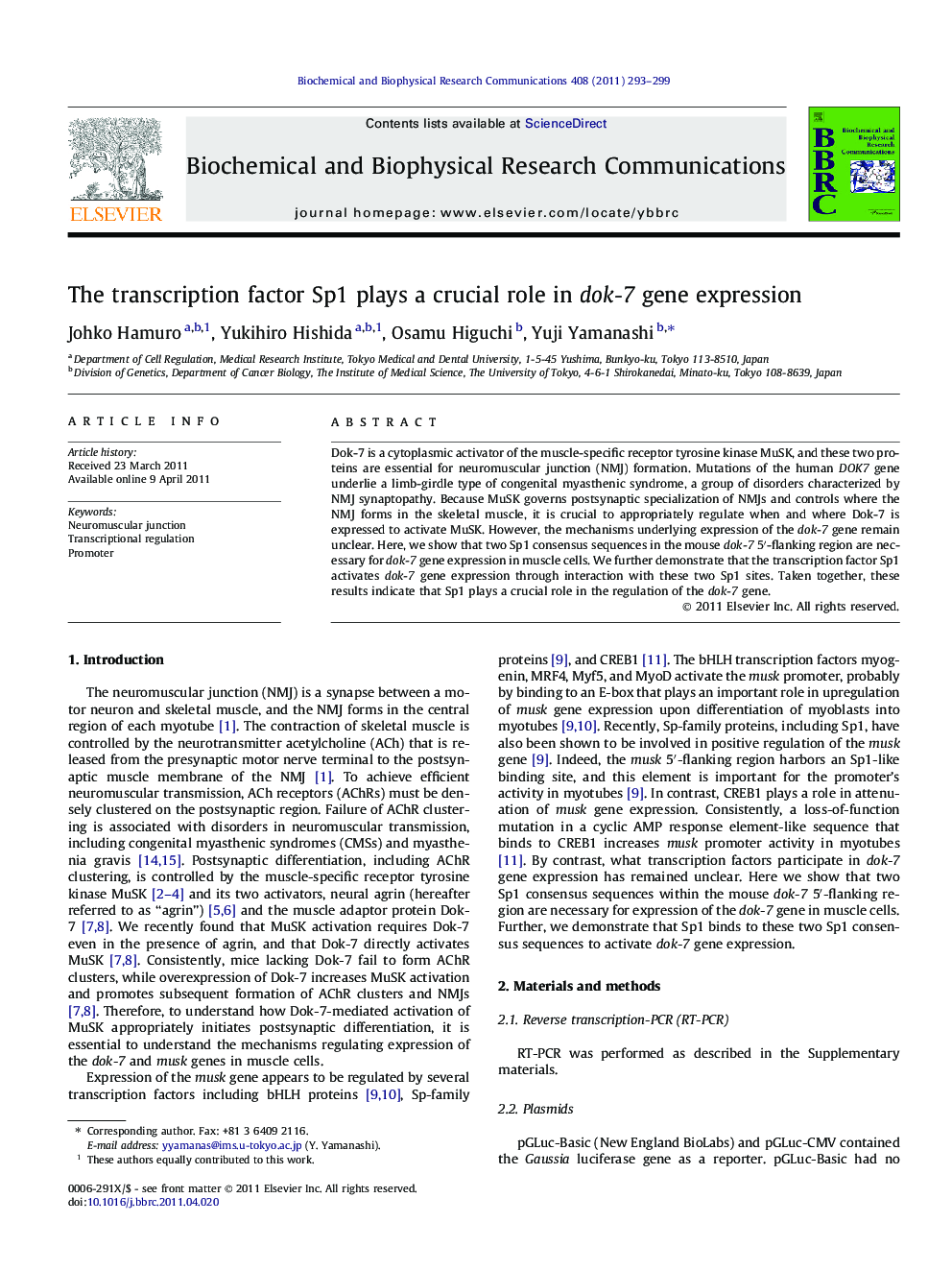| Article ID | Journal | Published Year | Pages | File Type |
|---|---|---|---|---|
| 1930645 | Biochemical and Biophysical Research Communications | 2011 | 7 Pages |
Dok-7 is a cytoplasmic activator of the muscle-specific receptor tyrosine kinase MuSK, and these two proteins are essential for neuromuscular junction (NMJ) formation. Mutations of the human DOK7 gene underlie a limb-girdle type of congenital myasthenic syndrome, a group of disorders characterized by NMJ synaptopathy. Because MuSK governs postsynaptic specialization of NMJs and controls where the NMJ forms in the skeletal muscle, it is crucial to appropriately regulate when and where Dok-7 is expressed to activate MuSK. However, the mechanisms underlying expression of the dok-7 gene remain unclear. Here, we show that two Sp1 consensus sequences in the mouse dok-7 5′-flanking region are necessary for dok-7 gene expression in muscle cells. We further demonstrate that the transcription factor Sp1 activates dok-7 gene expression through interaction with these two Sp1 sites. Taken together, these results indicate that Sp1 plays a crucial role in the regulation of the dok-7 gene.
► Expression of the dok-7 gene in muscle is required for neuromuscular synaptogenesis. ► The mouse dok-7 5′-flanking region has promoter activity in muscle cells. ► Two Sp1 sites in the 5′-flanking region are essential for its promoter activity. ► The transcription factor Sp1 binds specifically to the two Sp1 sites. ► Sp1 activates dok-7 gene expression via the two Sp1 sites.
